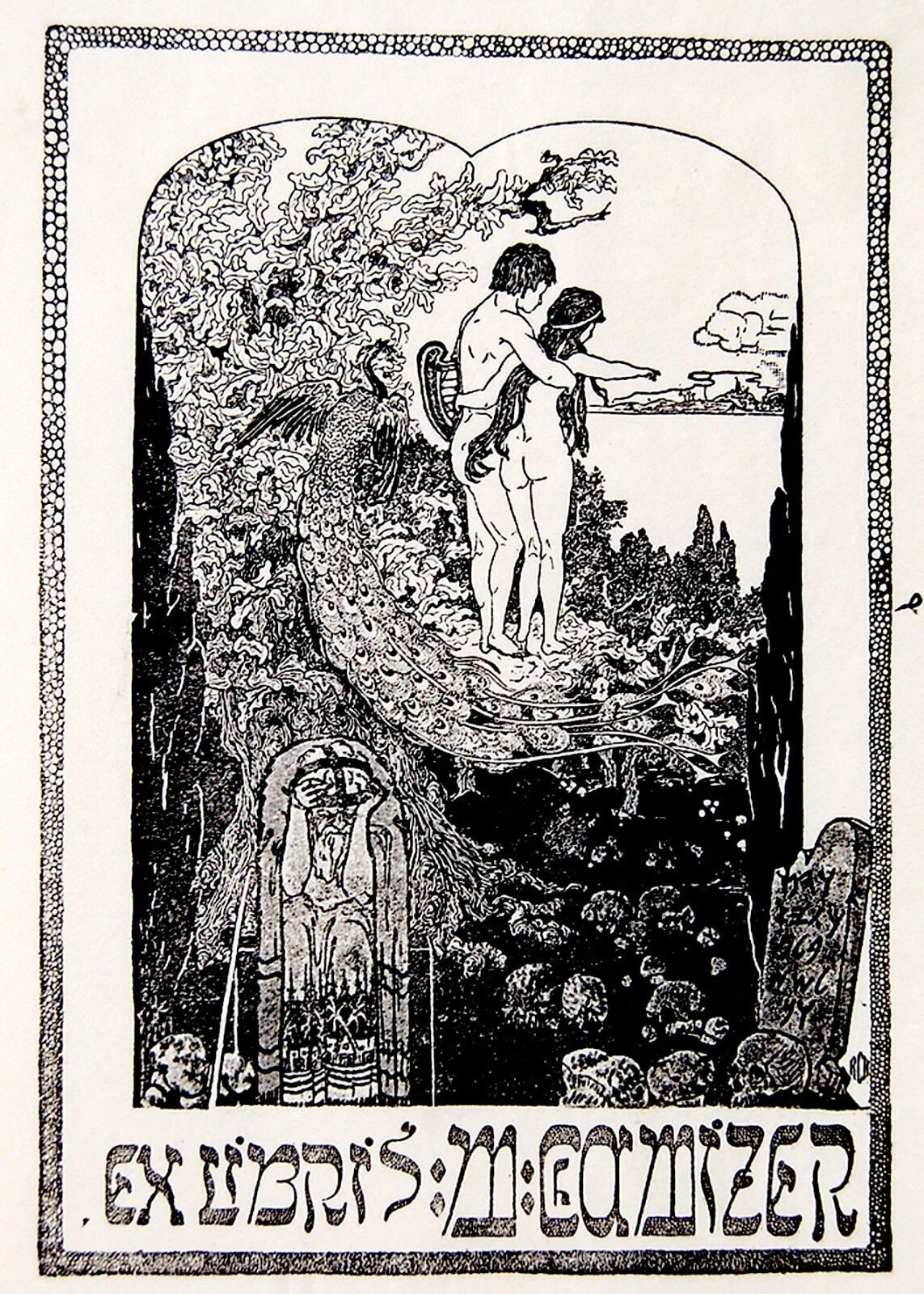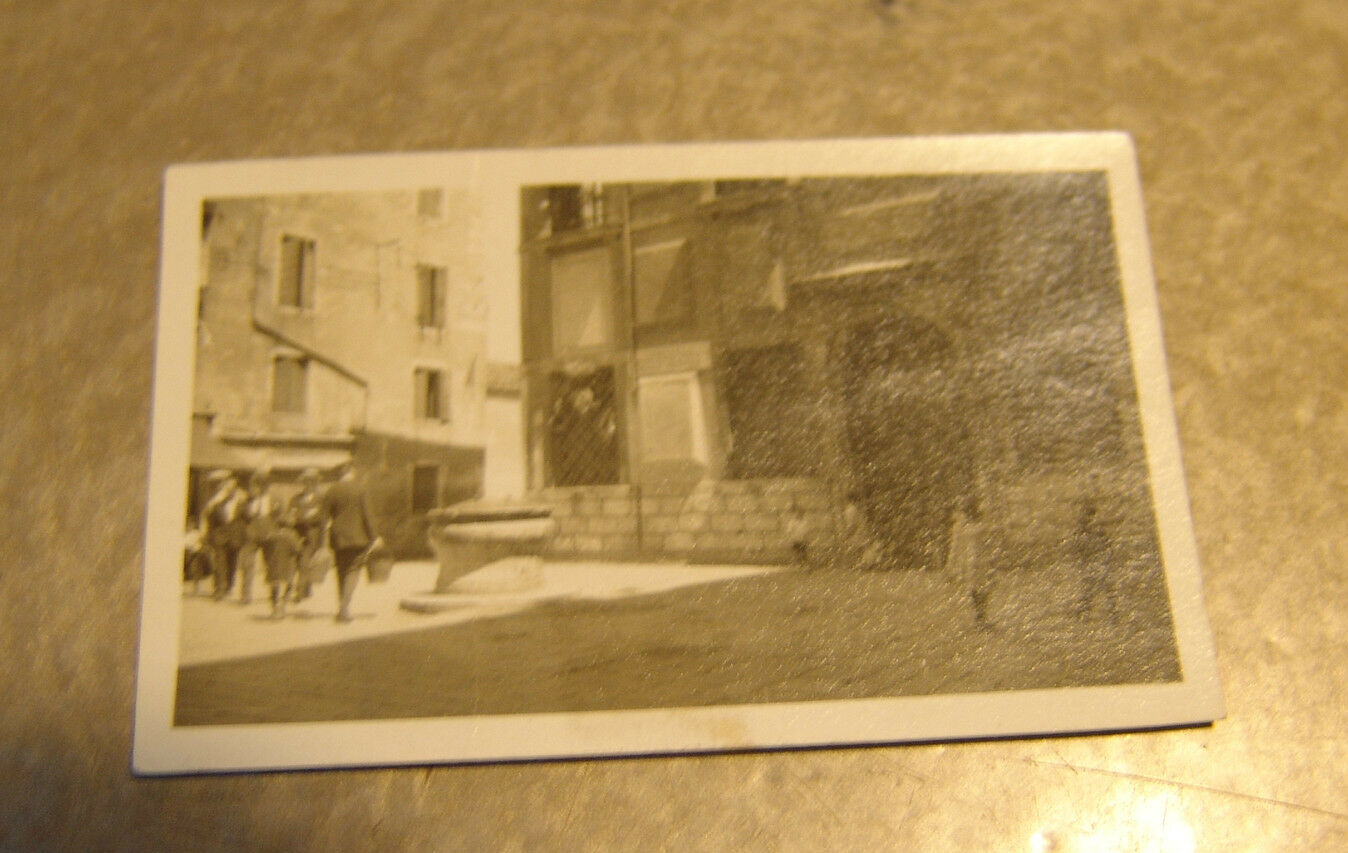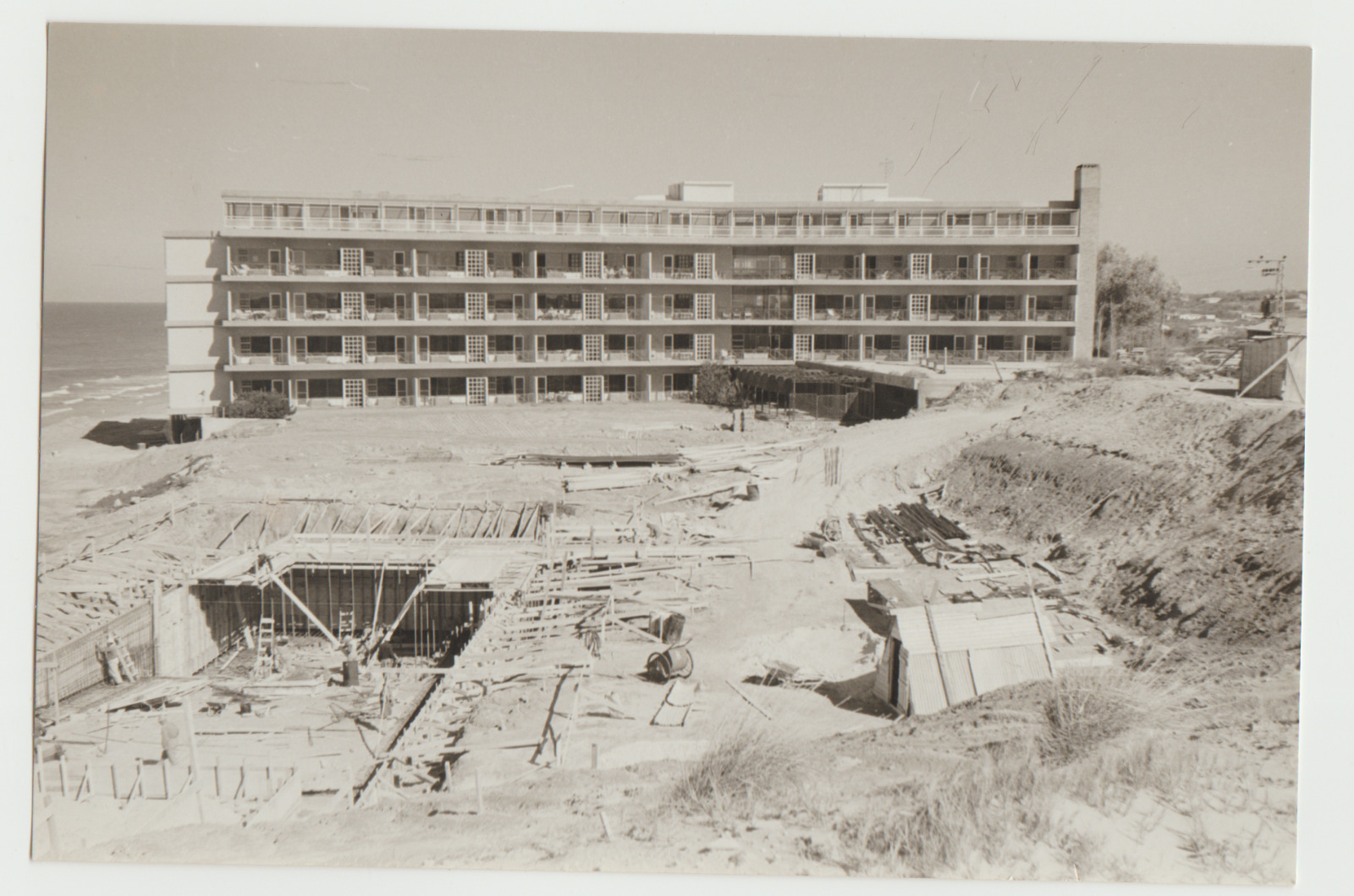-40%
1920 Hebrew ANAGRAM Bookplate EX LIBRIS Jewish EROTICA Judaica ISRAEL Biblical
$ 24.31
- Description
- Size Guide
Description
DESCRIPTION:
This ARTISTIC Hebrew ANAGRAM BOOK-PLATE of delicate MYSTERIOUS and EROTIC nature , Was designed for a JEWISH USER
( Who would decifer the HEBREW anagram being his name ? ) . It was propably designed in the 1920's or the 1930's
, The EX LIBRIS , With its delicate design is a beauty . It depicts a male and female NUDE , Accompanied by an exquisite PEACOCK ( Perhaps ADAM and EVE in PARADISE ? ) , Pointing at an imaginary far away land , While a JEWISH RABBI ( Rebbe ) , All covered by his big TALLITH ( Talit ) is mourning and praying . The whole JUDAISM scene looks like LONGING for ETERZ ISRAEL
- HOLY LAND - PALESTINE .
Numerous
JEWISH ARTI
STS , Illustrators, Painters and Graphic Designers such as
STRUCK
, LILIEN , BUDKO , RABAN , GUR ARIEH , STEINHARDT and others was a distinguished JUDAICA ARTIST . All these BAZALEL School of ART in Eretz Israel - Palestine artists , Illustrators and painters were involved in the thrilling creation of JEWISH BOOKPLATES.
Around 5.5 x 4 ". Very good condition.
( Pls look at scan for accurate AS IS images ) Will be sent in a protective rigid sealed packaging.
AUTHENTICITY
: This is an ORIGINAL ca 1920's - 1930's personal JEWISH-JUDAICA BOOKPLATE , NOT a reproduction or a reprint , It holds life long GUARANTEE for its AUTHENTICITY and ORIGINALITY.
PAYMENTS
:
Payment method accepted : Paypal
& All credit cards
.
SHIPPMENT
:
Shipp worldwide via registered airmail is $ 19
.
Will be sent in a protective rigid sealed packaging.
Will be sent around 5-10 days after payment .
JEWISH BOOKPLATES, labels, usually inside book covers, indicating the owner of the books. The earliest
ex libris
with Hebrew wording were made for non-Jews. One of the first bookplates was made by Albrecht Duerer for Willibald Pirkheimer (c. 1504) with an inscription in Hebrew, Greek, and Latin of Psalms 111:10. Hector Pomer of Nuremberg had a woodcut
ex libris
(1525) that is attributed to Duerer or his disciple, Hans Sebald Beham, with the Hebrew translation of "Unto the pure all things are pure" (NT, Titus 1:15). "A time for everything" (Eccles. 3:1) in Hebrew is found on the bookplate (1530) by Barthel Beham, of Hieronymus Baumgartner of Nuremberg.Among the Jewish artists in England who engraved bookplates in the 18 century were Benjamin Levi of Portsmouth, Isaac Levi of Portsea, Moses Mordecai of London, Samuel Yates of Liverpool, and Mordecai Moses and Ezekiel Abraham Ezekiel of Exeter. However, they only made a few bookplates for Jews. The first known
ex libris
of a Jew was made by Benjamin Levi for Isaac Mendes of London in 1746. A number of British Jews in the 18 and 19 centuries had armorial bookplates bearing the family coat of arms, although some of them were spurious. Sir Moses Montefiore had several
ex libris
which bore his distinctively Jewish coat of arms. Among the few Jewish
ex libris
made in the latter half of the 18 century in Germany were those for David Friedlaender, engraved by Daniel N. Chodowiecki in 1774; and Bernhardt Friedlaender, by Johann M.S. Lowe in 1790. In the 18 century Dutch members of the Polack (Polak) family were among the early bookplate artists. A.S. Polak engraved a heraldic
ex libris
for the Jewish baron Aerssen van Sommelsdyk. Isaac de Pinto, a Dutch Sephardi Jew, had a bookplate featuring a huge flower vase with his monogram. The modern Russian-Jewish artist S. Yudovin engraved a number of exquisite woodcut bookplates which are among the relatively few with Yiddish inscriptions. Among other European Jewish artists who have used various graphic media to execute
ex libris
are Uriel Birnbaum, Lodewijk Lopes Cardozo, Fré Cohen, Alice Garman-Horodisch, Georg Jilovsky, Emil Orlik, and Hugo Steiner-Prag. Marco Birnholz (1885–1965) of Vienna, a foremost collector, had over 300 different ones for his own use that were made by many of the European Jewish graphic artists. Bookplates of three Jews are considered to be among the earliest American
ex libris
, dating from the first half of the 19 century. The pictorial bookplate of Barrak (Baruch) Hays of New York incorporated a family coat of arms. Benjamin S. Judah had two armorial bookplates, although there is no evidence that he was entitled to bear a coat of arms. Dr. Benjamin I. Raphael also had two
ex libris
– one showing a hand grasping a surgeon's knife and the other a skull and bones, symbols frequently found on medical
ex libris
. Among the early American college bookplates that have Hebrew words are those of Yale University, inscribed with
Urim ve-Thumim
, Columbia with
Ori El
("God is my light," alluding to Ps. 27:1), and Dartmouth with
El Shaddai
("God Almighty"). Many of the major universities in the United States have a variety of bookplates for their Judaica collections. American Jewish artists of bookplates include Joseph B. Abrahams, Joanne Bauer-Mayer, Todros Geller, A. Raymond Katz, Reuben Leaf, Solomon S. Levadi, Isaac Lichtenstein, Saul Raskin, and Ilya Schor. Ephraim Moses Lilien, the "father of Jewish bookplates," designed many for early Zionist leaders which revealed national suffering and hopes. He gave the Hebrew rendering of the Latin term
ex libris
–
mi-sifrei
("from the books of") for the numerous
ex libris
, which he created with definitive Jewish significance, and inaugurated a new era in this field that was pursued by other Jewish artists. Hermann Struck drew inspiration from the monuments and landscape of Ereẓ Israel for the
ex libris
he made. Joseph Budko created more than 50 bookplates in aquatints, woodcuts, etchings, and drawings, mostly in a purely ornamental style, leaning heavily on the decorative value of Hebrew script. His artistic
ex libris
are considered among the finest Jewish examples. Jakob Steinhardt also executed a number of bookplates. Among the other modern Israel artists who produced
ex libris
are Aryeh Allweil, David Davidowicz, Ze'ev Raban, J. Ross, Jacob Stark, and Shelomo Yedidiah. Synagogues, Jewish community centers, and institutions of Jewish learning have their own bookplates on which are imprinted names of the donors of books or names of deceased persons who are thus memorialized. Important collections of
ex libris
are at Hebrew Union College, Cincinnati, consisting mainly of the private collections of Israel Solomons and Philip Goodman, and at the Museum of the Printing Arts, Safed, based mainly on the private collection of Abraham Weiss of Tel Aviv. anagram is a type of word play the result of rearranging the letters of a word or phrase to produce a new word or phrase, using all the original letters exactly once; for example
orchestra
can be rearranged into
carthorse
. Someone who creates anagrams may be called an "anagrammatist". The original word or phrase is known as the
subject
of the anagram. Any word or phrase that exactly reproduces the letters in another order is an anagram. However, the goal of serious or skilled anagrammatists is to produce anagrams that in some way reflect or comment on the subject. Such an anagram may be a synonym or antonym of its subject, a parody, a criticism, or praise. 1.ebay527a














